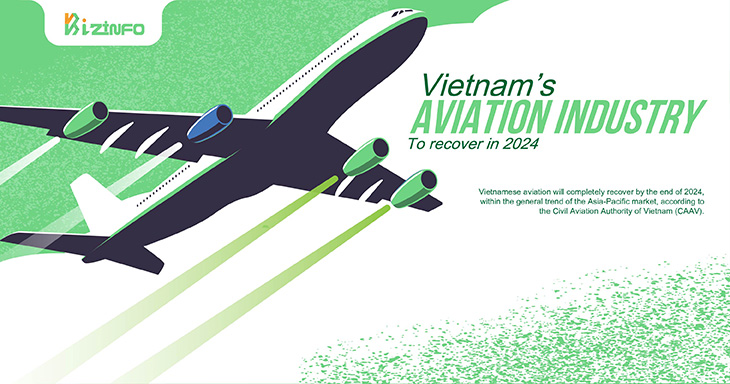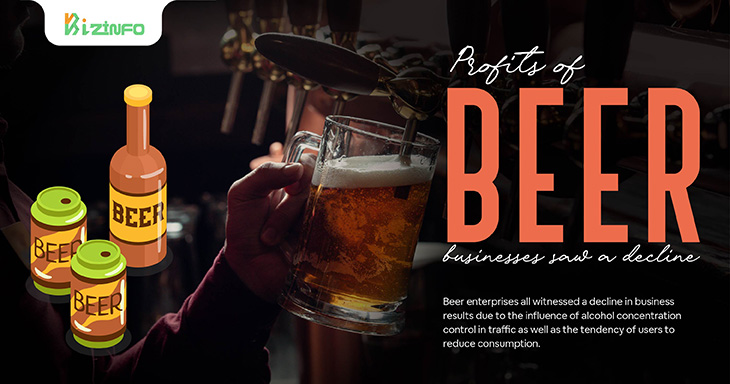Published Jun 2024
Exploring Vietnam's flourishing food and beverage industry
Vietnam's food and beverage (F&B) industry has emerged as a vibrant and dynamic sector, driven by its rich culinary heritage, increasing urbanization, and robust economic growth. This article delves into the various facets of the industry, highlighting key trends, opportunities, and challenges.
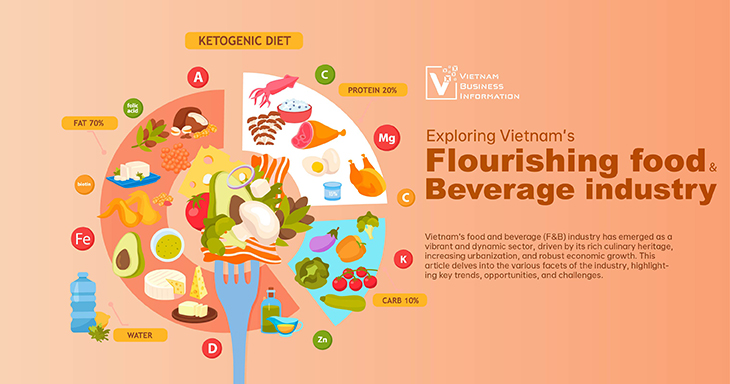
Vietnam's F&B industry - Market growth and economic impact
Vietnam's culinary scene is renowned globally for its diversity and depth of flavors. From the bustling street food markets of Hanoi to the sophisticated dining establishments in Ho Chi Minh City, the country's cuisine is a tapestry of influences, blending indigenous ingredients with French, Chinese, and other Southeast Asian flavors. Staple dishes like pho, banh mi, and spring rolls have gained international fame, drawing food enthusiasts from around the world.
The F&B industry in Vietnam has seen significant growth over the past decade, contributing substantially to the national economy. In 2022, the sector is forecast to reach a value of nearly 1 million billion VND by 2026, with an annual growth rate of around 7-8%. This growth is fueled by a rising middle class, increasing disposable incomes, and a young, dynamic population with evolving tastes and preferences.
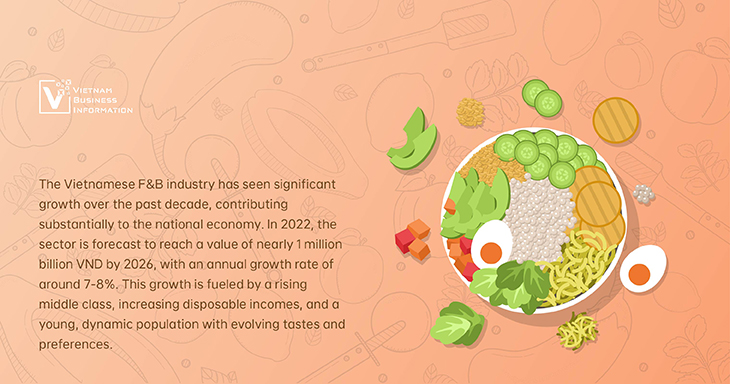
Key trends shaping the F&B industry
There is a growing consumer shift towards healthier food options. Organic produce, low-sugar beverages, and plant-based alternatives are becoming increasingly popular as health consciousness rises.
Busy urban lifestyles have led to a surge in demand for convenient food options. Ready-to-eat meals, food delivery services, and innovative packaging solutions are gaining traction.
Vietnam's rich culinary heritage is a significant draw for tourists. Culinary tours, cooking classes, and food festivals are popular activities, enhancing the country's appeal as a gastronomic destination.
With global awareness of environmental issues on the rise, sustainability has become a critical focus for the food and beverage industry. Efforts to reduce plastic use, promote sustainable sourcing, and minimize food waste are increasingly evident.
Opportunities for growth
Vietnamese cuisine is gaining international popularity, creating opportunities for exporting both traditional and modern F&B products. The country's seafood, coffee, and tropical fruits are particularly well-positioned for global markets.
The adoption of technology in the F&B sector is creating new business models. Online food delivery platforms, digital payment systems, and smart kitchen appliances are revolutionizing the way food is prepared and consumed.
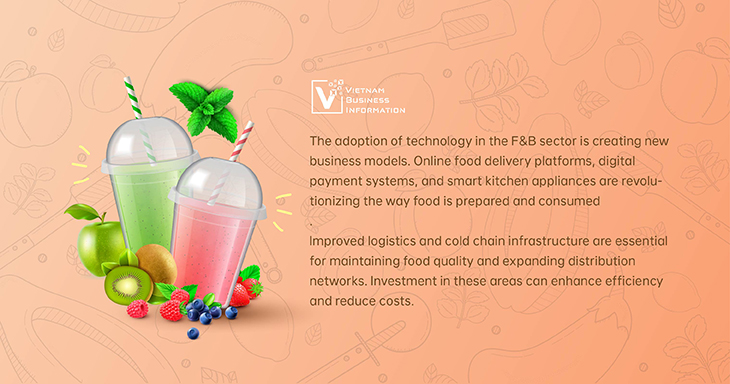
Improved logistics and cold chain infrastructure are essential for maintaining food quality and expanding distribution networks. Investment in these areas can enhance efficiency and reduce costs.
Challenges to address
Ensuring food safety remains a challenge, with issues related to contamination and lack of standardized regulations. Strengthening food safety protocols and enforcement is crucial for consumer confidence.
The industry faces intense competition both domestically and internationally. Small and medium-sized enterprises (SMEs) must innovate and differentiate their offerings to stay competitive.
Events like the COVID-19 pandemic have highlighted vulnerabilities in the supply chain. Developing resilient and flexible supply chains is essential for future stability.
Vietnam's food and beverage industry is poised for continued growth, driven by a rich culinary tradition, favorable economic conditions, and evolving consumer preferences. By embracing innovation, sustainability, and international expansion, the industry can capitalize on the myriad opportunities ahead while addressing the challenges that come with rapid development. As Vietnam continues to make its mark on the global culinary stage, its F&B sector remains a critical pillar of the nation's economic and cultural identity.













